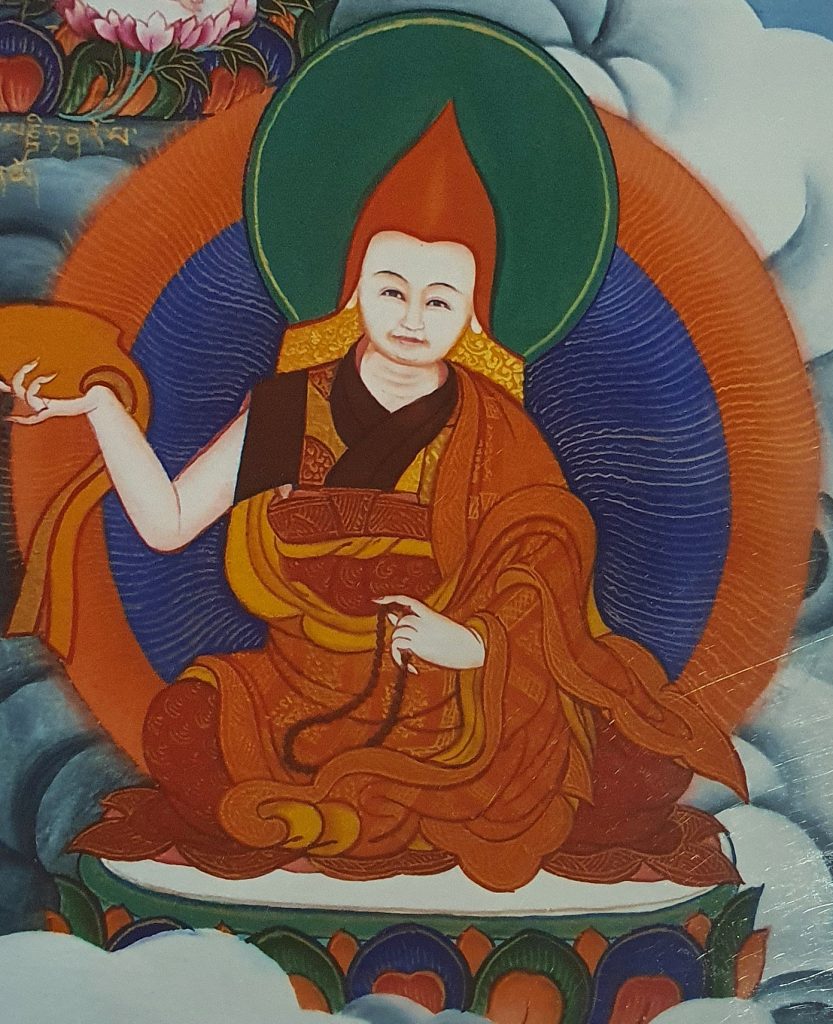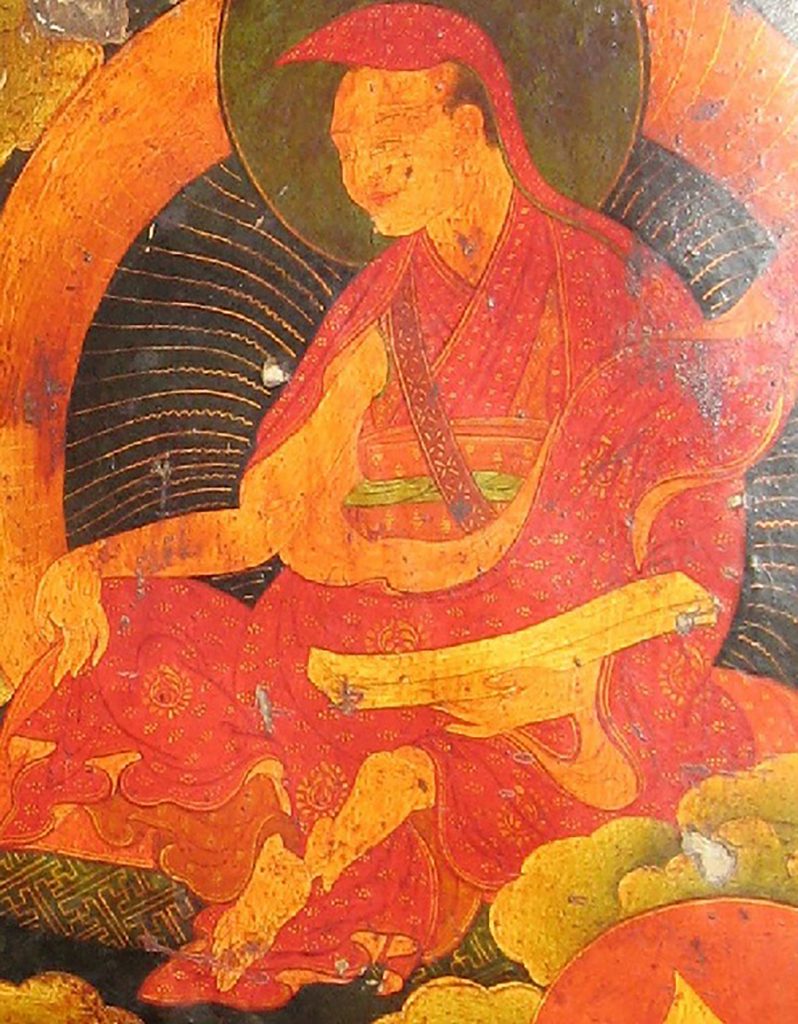Previous Lives
Kadam Master of Philosophy
Khuton Choje
 Khuton Choje Tsondru Yungdrung (1011 – 1075) was one of the three main disciples of the great Indian pandit Atisha Dipamkara Shrijñana. Prior to meeting his eminent guru, Khuton Choje was himself already a highly revered Kadampa spiritual master and served as the abbot of Solnak Tangpoche Monastery in the Yarlung Valley.
Khuton Choje Tsondru Yungdrung (1011 – 1075) was one of the three main disciples of the great Indian pandit Atisha Dipamkara Shrijñana. Prior to meeting his eminent guru, Khuton Choje was himself already a highly revered Kadampa spiritual master and served as the abbot of Solnak Tangpoche Monastery in the Yarlung Valley.
Although just 72 kilometres long, the Yarlung Valley which is in the Ü region of Tibet is considered the cradle of Tibetan civilisation; according to legend, this is where the Tibetan race of people originated from. Given its historical and cultural significance to the Tibetans, the Yarlung Valley is home to a number of important castles, monasteries, temples, meditation caves, peaks and stupas. Such is the place where Khuton Choje’s monastery is located.
Like many Kadampa monasteries of its time, Solnak Tangpoche Monastery developed a reputation for its philosophical teachings, rather than tantric powers. There is no doubt that this reputation was in part due to Khuton Choje’s works – he was instrumental in inviting Atisha to give teachings in Solnak Tangpoche, an invitation which resulted in Atisha residing at the monastery for one month.

Thus Solnak Tangpoche came to be considered a powerful early scholastic centre in Tibetan Buddhism, alongside other established monasteries such as Sangpu Neutog. After a visit by Lama Tsongkhapa in the 14th Century, Solnak Tangpoche Monastery became a Gelug monastery and remains an active Gelugpa community today.
Having turned the Wheel of Dharma tirelessly for his entire life, it is unsurprising therefore that Khuton Choje also had a number of illustrious disciples, including Zhonnu Sengge, who became the third abbot of Ralung Monastery. Khuton Choje eventually played a significant role in the fusion of the old curriculum with the new Kadampa materials brought to Central Tibet in the mid to late 11th Century.
